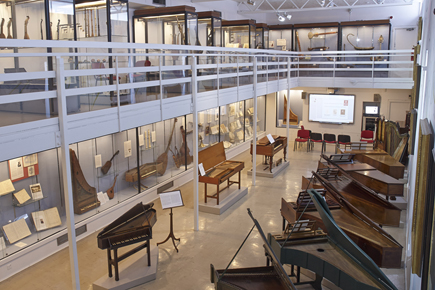Museum blog: Museum decant – a curator's perspective
Friday 15 September 2017
Saying goodbye to an old museum always gives me mixed emotions.
Ours was a pioneering initiative in the world of music museums and does great credit to the vision of the RCM in the late 1960s, and its then Museum Curator Elizabeth Wells . It was purpose built to maximise the space available for display, with active climate control and a design that provided natural light but not directly on the instruments.
However, the climate control system (which was state of the art in its day) was no longer good enough to guarantee the right environmental conditions to preserve the collection, and had resulted in some damage on a number of items. Our collections are particularly sensitive to changes in humidity and temperature due to their age. Some of our instruments are over 300 years old and still playable! We are eager to keep them this way. The RCM felt this was a good opportunity to improve accessibility and renew the display. And I agree.
Approaching the task of moving an entire collection to storage can seem daunting. Many years ago in Florence I supervised the transfer of around 400 instruments belonging to the Medici collections and I have overseen the couriering of many instruments for temporary exhibitions. Both experiences are quite different from having to pack and store objects for a long time. As a curator, my first priorities were:
- The safety of the collection: both in terms of the environment it will live in and protection against theft! For this, we needed to find a storage solution that met the high standard required for precious objects.
- Accessibility of material: will people still be able to access the collection, and how? Ideally this means storing the collection not too far from London in order to limit the risks to or stress on the objects when they are transported.
- Finding a sustainable solution: looking for a cost-effective solution, regulated environmental conditions and low carbon footprint.
There are lots of things to weigh up in a move of this size and duration. What will the challenges be? How can we handle the objects safely and meet market standards (for those in the know, PD5454 and PAS198)? Can the storage facility give us access to the objects on-site with a dedicated space to examine them?
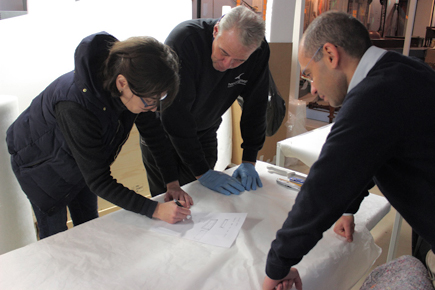
We decided to make a request for tender, as we were looking for suppliers with previous and current museum experience, a good carbon footprint record, and asked them to submit two case studies, an estimate of costs and two museum referees. In the early phase we relied on the expertise of a professional procurement consultant, who assisted us in all the legal, procedural and administrative processes.
Our conservator met all interested applicants here in the museum to discuss the basic requirements, and then we visited their facilities to evaluate and compare them. We left data-loggers on the premises in order to check environmental readings for a fortnight, and finally I appointed the company that presented the best overall profile. We were very lucky to be able to rely on a very collaborative network of colleagues in many other museums and institutions who were of great help in sharing their experiences and insights. We look forward to doing the same for others.
Then it was time to get started!
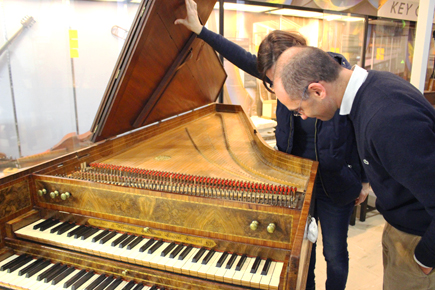
Our conservator, Susana, managed a skilled team provided by the decant company, Harrow Green. They were experienced, reliable and flexible. However, due to time and space constrictions, we involved and trained the whole of our team! It offered a great opportunity for everyone to get more directly acquainted with our collections and to handle objects that were otherwise mostly in showcases.
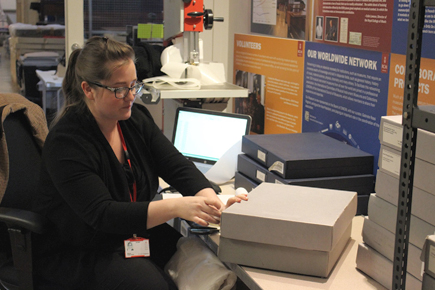
| A decant volunteer recording and labelling items |
I also enjoyed getting practical, making boxes and packing of some instruments. I like hands-on work with collections and enjoy being directly involved whenever possible!
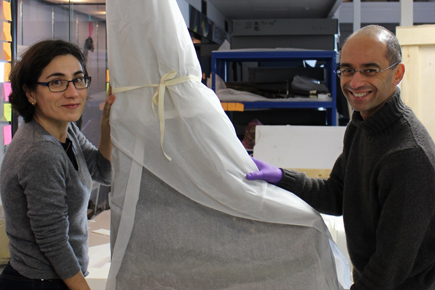
| Conservator Susana Caldeira and Curator Gabriele Rossi Rognoni packing the clavicytherium, believed to be the earliest surviving stringed keyboard instrument in the world |
Most of the objects were packed and decanted within the timeline and extensive decant planning meant that each object was correctly recorded, reducing the risks of items being misplaced, lost or damaged. I believe that this is a very satisfactory outcome, overall, particularly when you consider we decanted almost 20,000 objects in just over three weeks!
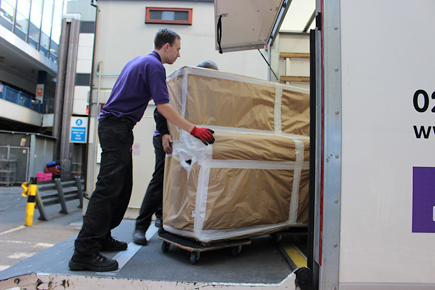
Learning from experience is an important part of museum work, and looking back there are several things I might have done differently. I would have reorganised the workflow of the available teams to reflect individual strengths and weaknesses, and I would have planned the supply chain for materials differently. I would also have allowed more contingency time in the original plan and assigned one dedicated collections manager to document all the ‘comings and goings’ of the instruments, rather than relying on the packing team to do this amidst all the other tasks.
So what makes a successful decant?
For me, removing all items from the premises without incurring any damage to objects (or people!) is a mark of success. Making sure that the packing is durable and guarantees conservation for the time required, as well as creating a complete and transparent documentation trail for each object that reduces the risk of loss is also essential. And delivering all this within the timeline and budget available, and with a team in good spirits at the end of the process.
I consider museum buildings to be shells inhabited by living collections. Those collections eventually outgrow their shells and take on new lives that need new homes.
However, every space is filled with memories and with the stories of people who helped create those memories, kept them alive and made them special. It’s thanks to the dedication of Elizabeth Wells, with the support of Oliver Davies and Sir Keith Faulkner, that our collections even have a dedicated, purpose-built home. This initiative that began over forty years ago has transformed our collection into a public museum, attracted donations and support, and helped us get to where we are today.
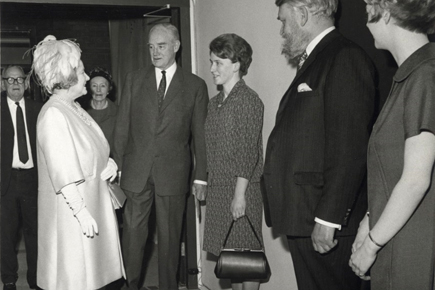
| The Queen Mother opening the new museum on 23 April 1970, with Sir Keith Faulkner and ex-Curator Elizabeth Wells |
I have learned to rely on and value people’s skills, creativity and capacity to react well to difficult and pressured situations. There were almost fifteen people involved in the decant process, about half of which were professionally trained, and the others were trusted colleagues with no previous experience.
The challenges and surprises that emerged were considerable, and we all had to learn on the job. It would have been impossible to accomplish the task on time and on budget otherwise.
Now construction work can begin. We have also completed a new conservation workshop and are now retrieving material to be conserved or digitised ready for the new gallery space in three years’ time.
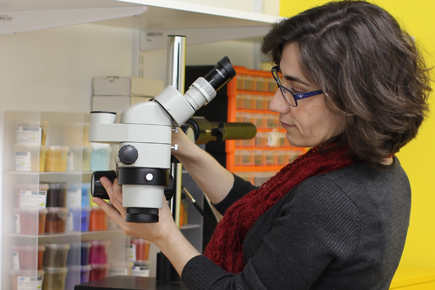
By the end of 2019, members of the public should be able to see the collections on display in an interactive gallery, hear them being played in a new climate controlled performance space, and be able to study them in a dedicated research area. In the meanwhile, our volunteers are busy digitising new material so that you can access our collections online!
Gabriele Rossi Rognoni
Curator, Royal College of Music Museum


